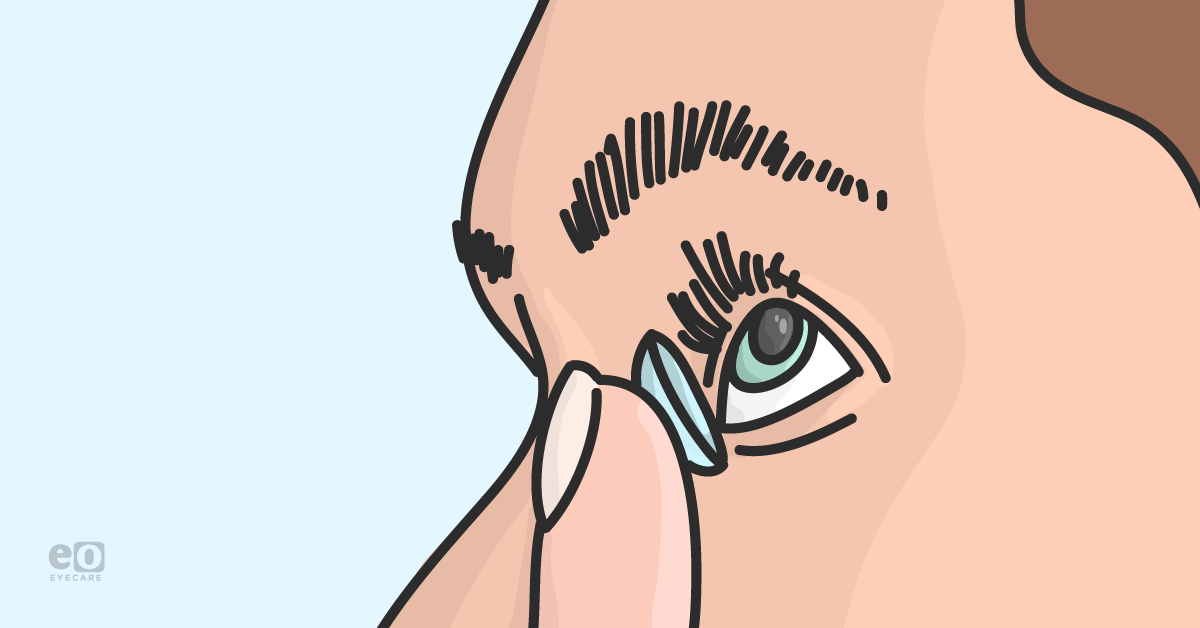We have all had that patient who comes in wearing the same brand of two-week or monthly lenses they've worn since they were first fitted with contacts twenty years ago. Not only is the technology outdated and uncomfortable, but the patient is stretching their lenses out from two weeks to four weeks or four weeks to two months! Yikes!
“But it is like pulling teeth to get them out of their beloved extended wear lenses,” you think to yourself, “How will I ever be able to get them to convert?” Well, have no fear—this article is here to guide your conversation with the patient to get them into a new, healthier, daily lens, so you and their eyes can finally breathe easier!
Cost benefits
As we all know, the doctor can drone on and on about the
health benefits of daily lenses, but if the price is not justified in our patient’s mind, they will never spend the money. Initially, daily lenses may come as a sticker shock, but if you break down how much the patient is saving with daily lenses, they’ll be more likely to, at least, try out the lens—which usually then converts them to buying them.
Companies are now offering extremely competitive rebates—some up to $350 off a year supply—to patients who are new to daily lenses. Furthermore, think about all the money the patient will save on not having to buy solution anymore, that’s nearly
$200 bucks a year. That is a total of
$550 in savings, which brings
the cost of dailies down substantially, making it more enticing for patients.
When patients sit in my chair and give me a “not buying it” look, I will often show them how much they would be saving with rebate and no longer needing a cleaning solution, compared to a two-week lens with lens solution.
Dailies are approximately $800-1000 per year.
If you subtract out the rebate of up to $350 and $200 in solution it brings the cost down to around $450 a year.
A year supply of a two-week lens costs approximately $260 for a year supply + $200 for solution = $460 per year.
Even if the daily lenses still come out to be more than an extended wear lens, you help break down the cost and make it more transparent so the patient trusts you and understands what exactly comprises their costs.
Sometimes all it takes is to break down the cost for the patient for them to truly understand how much they can save.
Health/comfort benefits
Daily lenses are not only healthier for the eyes, because the patient is putting in a new, fresh lens every day, but they have a higher Dk or oxygen transmissibility, thus reducing that chance of neovascularization or corneal ulcers. Also, if patients are not compliant about cleaning their extended lenses thoroughly and changing out the solutions daily, this can harbor bacteria that can lead to a serious infection.
A study by Chalmers et al. showed that daily disposables carry a 12.5X lower risk of corneal infiltrative episodes compared with reusable lenses.1 When discussing these health benefits to working adults and parents of teenagers, many are very adamant about reducing the risk of corneal infection and potential vision loss.
You can’t believe how many patients report back saying their eyes have not felt this good in years!
Technology/design
The
daily lenses have the most cutting-edge design that is thinner with a less-noticeable edge design, and they have overall better optics. Thinner lenses reduce the “feel” of the lens in the eye which increases overall comfort. Edge design improvements reduce discomfort with blinking. Better optics in the lenses allow for sharper, crisper vision, which is critical when fitting multifocal contact lenses.
I almost exclusively fit daily multifocal lenses because the optics are just so much more advanced than the extended wear lenses, and you need every ounce of help you can get to make the multifocal fitting process a success.
Seal the deal
For many practitioners getting the patient to purchase the lenses is the hardest part; even after you explain the cost and health benefits of daily lenses, your patient is still hesitant to hand over the credit card. First off, throw away all those extended wear trials. Out of sight, out of mind. Also, the patient will be more likely to want a trial in office than wait for their trials to come in a week later.
The best thing to do with these patients is just to give them some trials that day to put in and try! Oftentimes you will hear those sweet words “Oh wow” immediately come from the patient’s mouth.
Once this happens, the best way to seal the deal is to bring them immediately to an optician and have them SIT DOWN. Yes, the actual process of having them formally sit down increases the chances of sales because it shifts the patient into a more serious buying-ready mental space. And, place an order for a YEAR’s supply of lenses before they leave.
In 99% of cases, the patient will keep the lenses. Overall, this is less hassle for both the practice and the patient, and everyone walks away happy.
Take-home points
Remember that patients usually look for contact lens guidance from their doctors and want to take care of their vision. If you are passionate about the benefits of daily lenses, the patients will likely be as well. So go out there and make it your mission to fit as many patients as you can with daily lenses!
References
- Chalmers RL, Keay L, et al. Multicenter case-control study of the role of lens materials and care products on the development of corneal infiltrates. Optom Vis Sci 2012;89(3): 316-25
